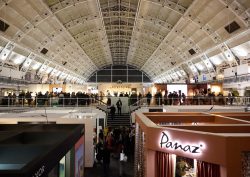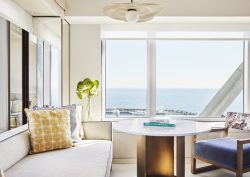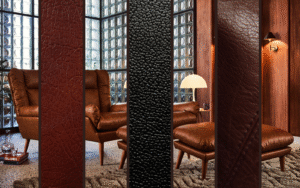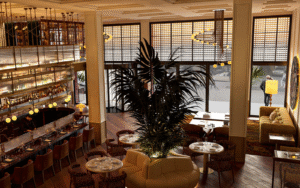‘Next-gen thinking – designing for the future’ was a talk offered as part of Havwoods’ Clerkenwell Design Week programme, brought to you by Hamish Kilburn, Editor of Hotel Designs, and architect Rachel Hoolahan, Associate and Sustainability Coordinator at Orms…
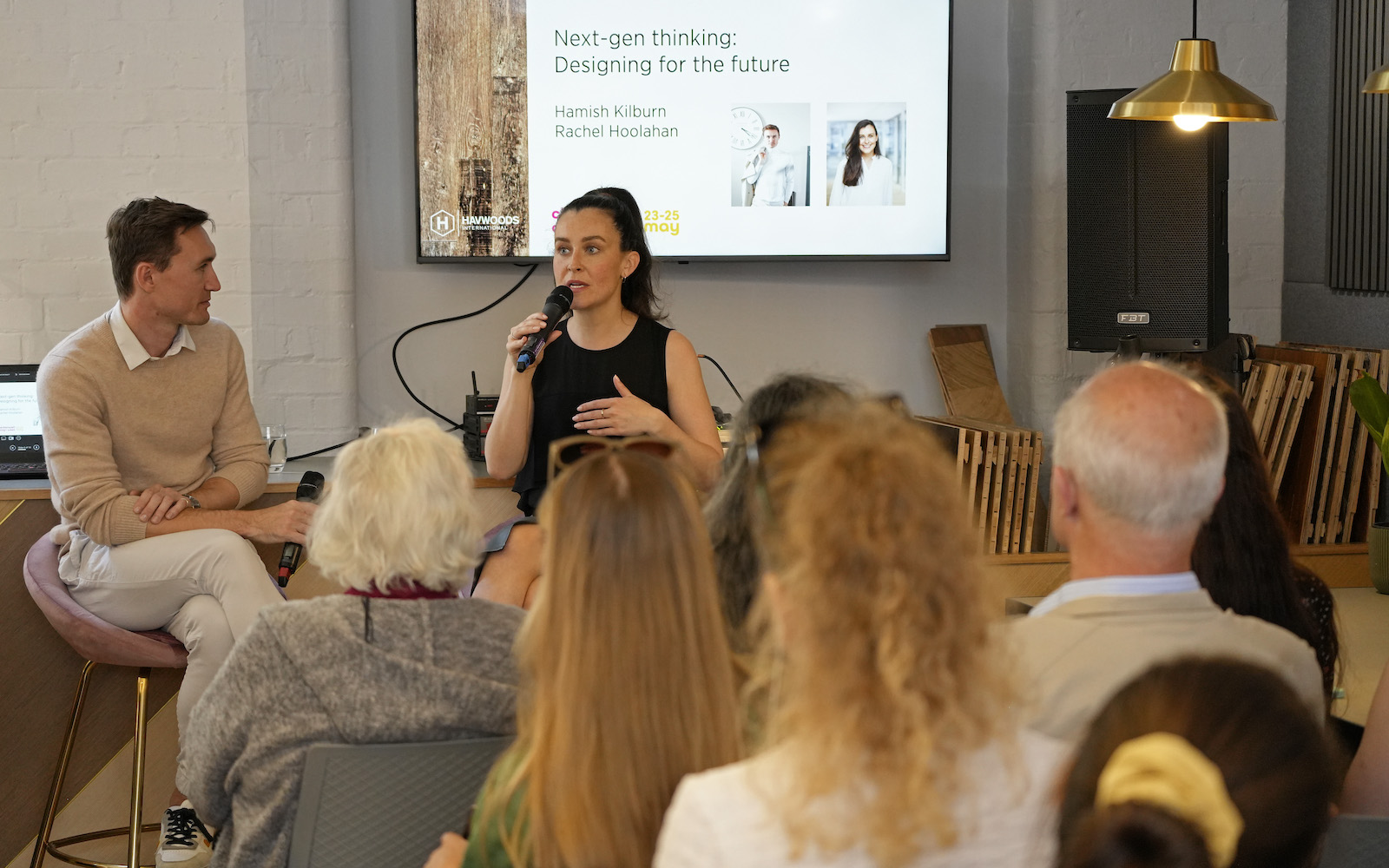
Rachel Hoolahan is no stranger to Hotel Designs. Having been on our radar for a few years – she has appeared on DESIGN POD and a number of roundtables for good measure – the architect and now Associate at Orms is the studio’s official Sustainability Coordinator. But more than that, Hoolahan is an ambassador for the entire industry, collectively, to work together to become more conscious of the environmental and social impacts of our actions – while championing intuitive and thoughtful architecture.
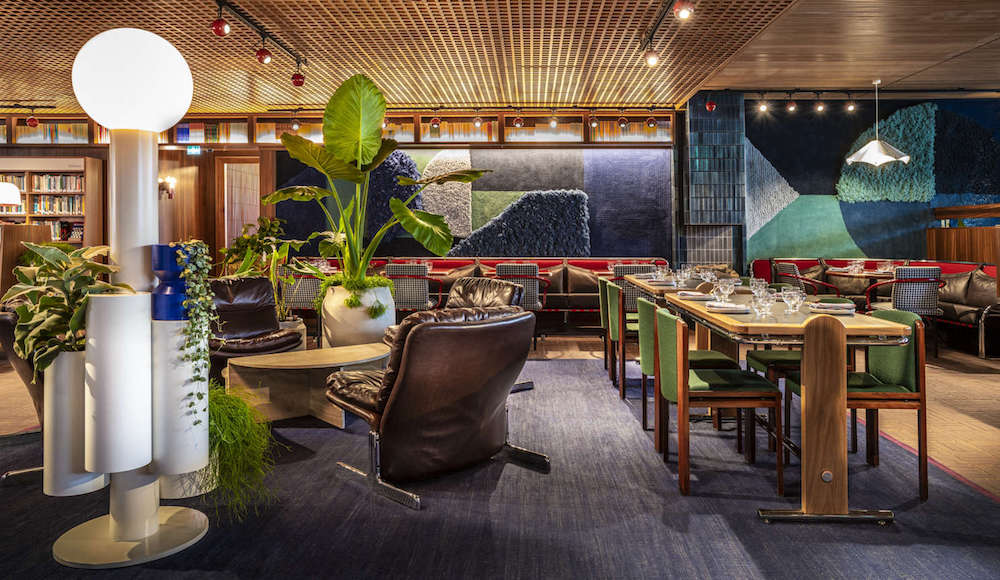
Image credit: The Standard London. Architecture by Orms
For this reason, when asked to moderate a session on ‘next-gen design thinking’ by the team at Havwoods during Clerkenwell Design Week, Hamish Kilburn, Editor of Hotel Designs seamlessly asked Hoolahan to join him for an honest, open and safe conversation about what will drive positive change on tomorrow’s design and hospitality landscape.
Hamish Kilburn: Tell us about your journey in architecture – where did it all start?
Rachel Hoolahan: I wasn’t sure what I wanted to do, so I committed to some work experience at an architecture firm when I was 16 and fell in love with it! From there, I went on to study architecture in Dublin and went on to work at Weston Williamson in London on the Paddington Crossrail station in my work year, before returning to Ireland for my first full-time role.
I’ve always been curious about space. You know, the ‘wow’ moment, but also where great design makes you feel truly comfortable and part of the design. It’s that sense and feeling that you get, without being able to pinpoint exactly what it is.
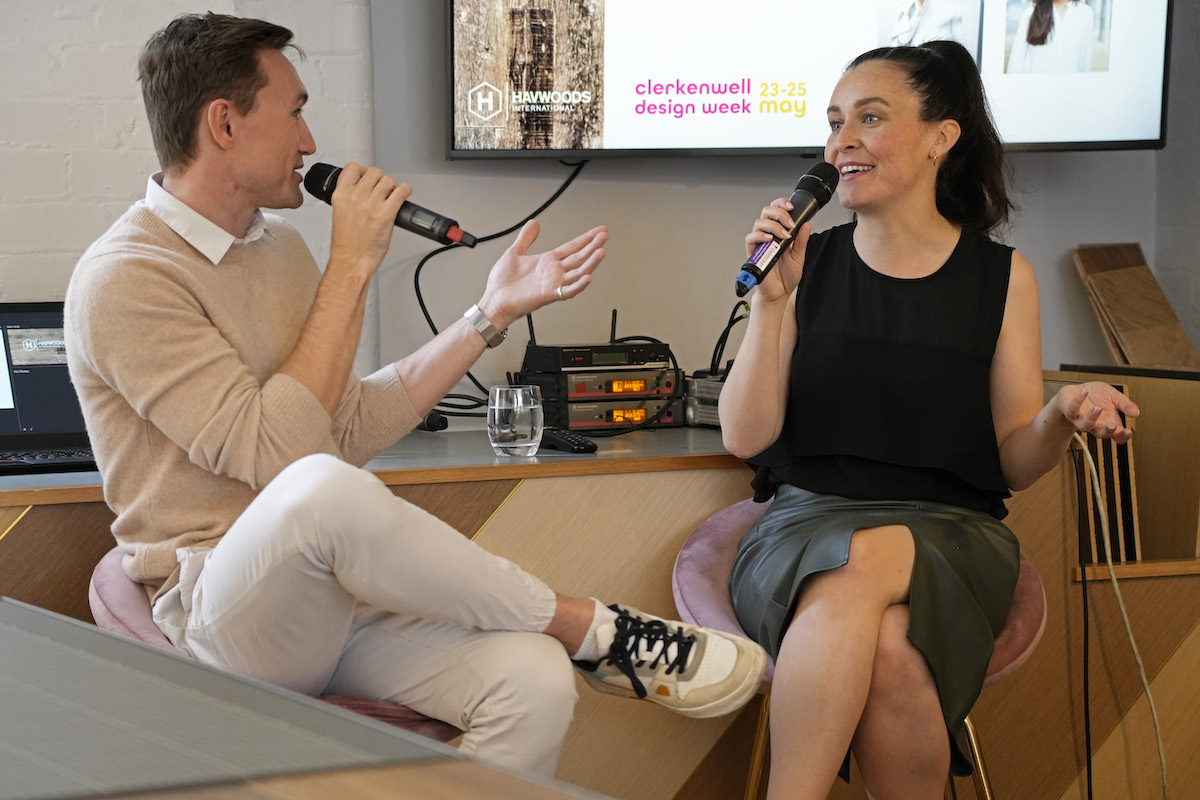
Image caption: Hamish Kilburn, Editor of Hotel Designs and Rachel Hoolahan, Associate at Orms, came together during CDW 2023 to discuss next-gen design. | Image credit: Havwoods
HK: How did your sustainability role come into play when at Orms?
RH: We love a challenge at Orms, so rather than thinking about sustainability as an add on, we think about it from within – it’s our ethos. I’ve always been curious and conscious of sustainability within the industry, so I carved out this position by learning and educating myself. I’d allocate time in my week to read and research interesting people and brands, listen to podcasts and read articles. As you learn and become more knowledgeable in this sector, you are then in that position to ask the right questions with both clients and suppliers.
HK: How important is the circular economy in future design?
RH: As an architect, we have so much power and influencer from the start, so we can think consciously about everything we’re doing at every stage. The circular economy is a necessity, not a choice. There are so many materials already in existence, so we need to start thinking about how they can be re-used and re-purposed – but as part of this process, we need to do our due diligence to find out where it came from and how it has been made.
Material passports are a great way to do this. They offer an opportunity to gather and organise data about materials contained within a building. An initiative like this has already received great funding from all over the world – it shows that you don’t have to compromise on design, but instead, you can add to it with materials already in circulation.
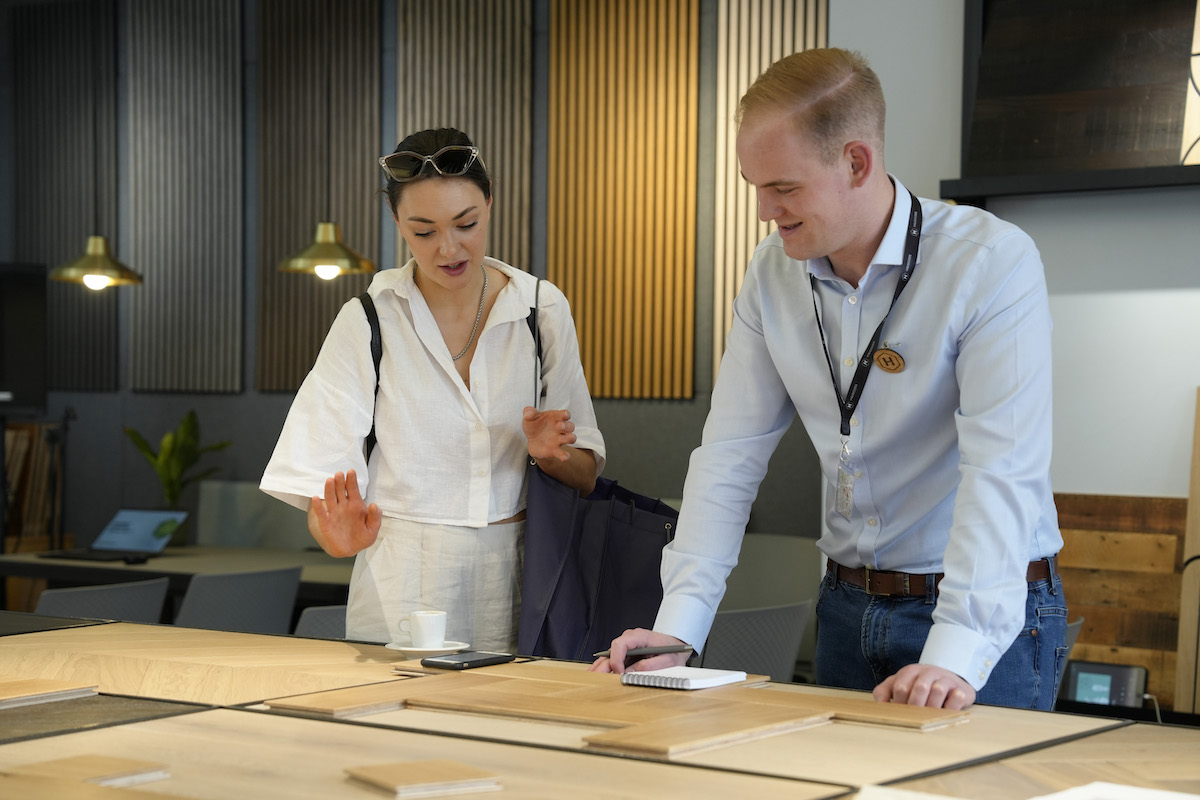
Image caption: Throughout CDW 2023, the Havwoods showroom was open and thriving to the design community. | Image credit: Havwoods
HK: How do you work with your hospitality clients so that they understand the importance of circular economy in future design?
RH: Hospitality is one of the most exciting industries to work in as people are more open-minded and experimental. When working on a new project, we give both a budget and a carbon budget. For example, if a client loves a certain material, we help them understand the decision they’re making and what impact that material has on the environment. Whilst we want to ensure the brief is met and matches their specifications, we can then advise from there and offer alternatives if we need to.
HK: What is the answer to being sustainable?
RH: Persistence and education. The design needs to be prevalent and impactful beyond the finished result. We guide both clients and suppliers about how they can be sustainable and meaningful in the long term.
HK: What can we learn from the next generation of designers and architects?
Rachel: This generation are the first that know nothing other than sustainability. Being environmentally conscious is woven through the narrative from the beginning. It’s really refreshing working this way as this generation are empathetic and really care. We always try and include junior designers from the start and support them as much as we can. It’s vital to prep your team and give them that time, and that nudge – however most of the younger team I work with are very confident anyway!
Havwoods is one of our Recommended Suppliers and regularly features in our Supplier News section of the website. If you are interested in becoming one of our Recommended Suppliers, please email Katy Phillips.
Main image credit: Havwoods







